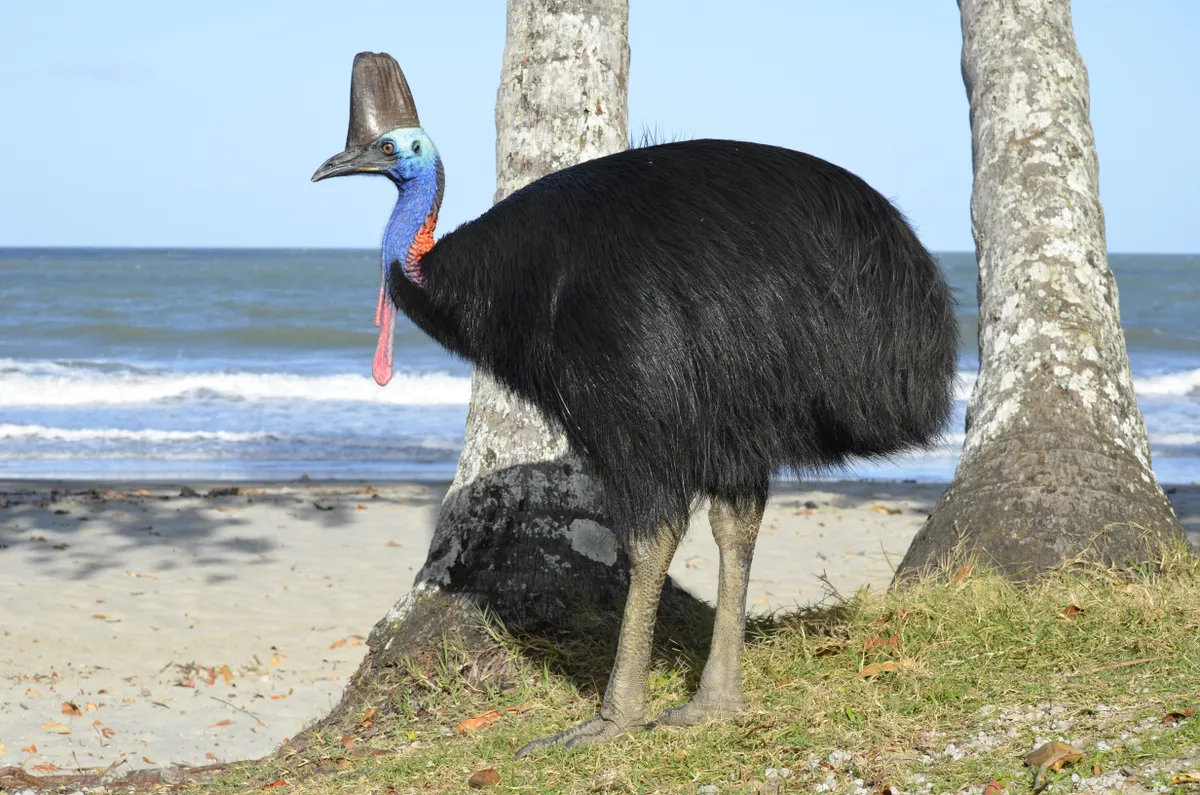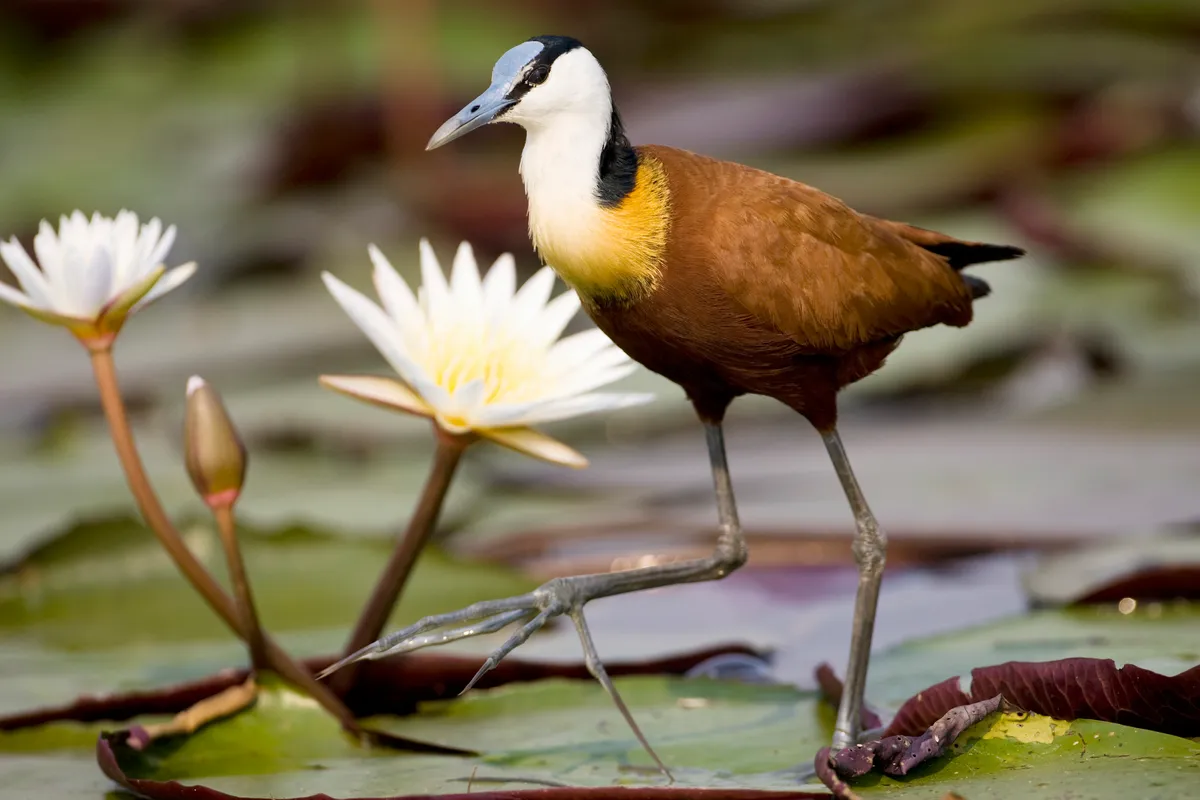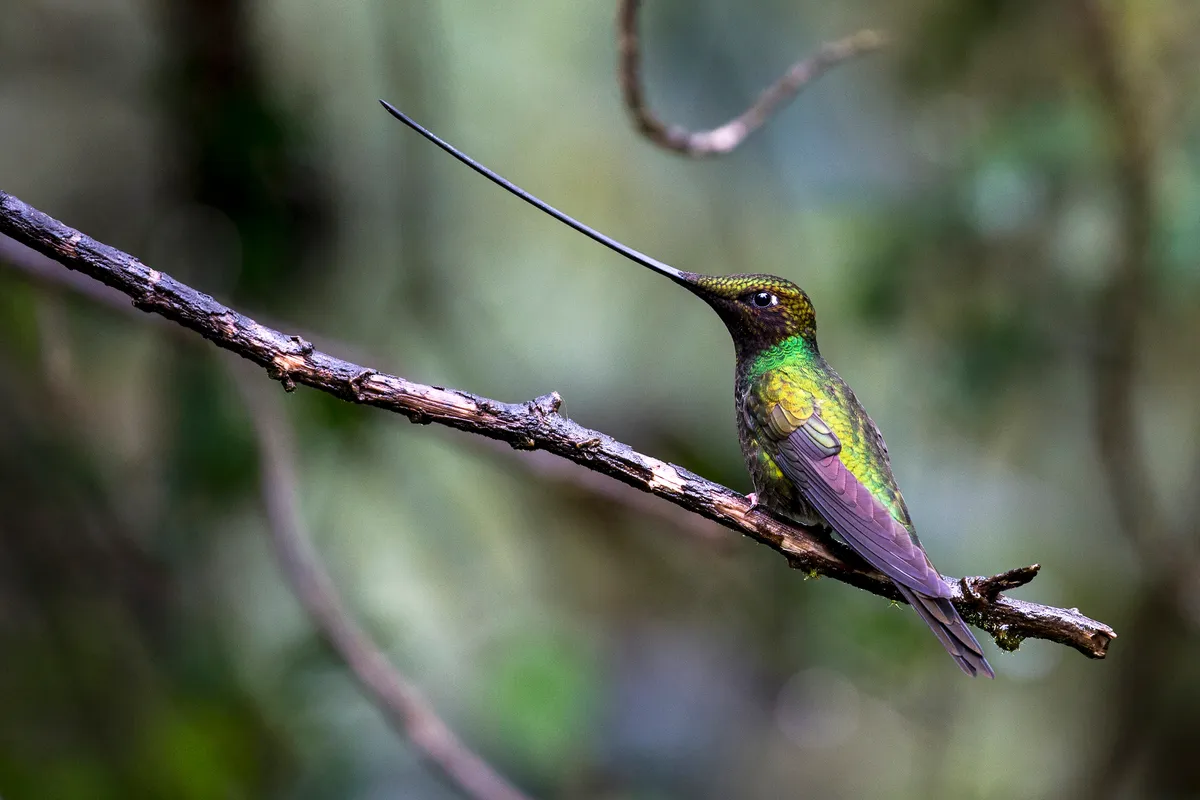When it comes to the weirdest birds, we have a rich crop to choose from. For example, there's the gaudy-hued king vulture, the strange great potoo – and don't forget the prehistoric-looking shoebill with its unnerving stare.
Here are our favourite weirdest birds.
15 weirdest birds
Kakapo

Although it may look like an owl, the Kakapo is actually a parrot - a very heavy, big parrot with males weighing up to 4 kilograms (about 8.8 pounds) and measuring around 60 cm (24 inches) in length.
The flightless Kakapo, endemic to New Zealand, has a distinctive appearance with moss-green plumage that helps them blend into the countryside
Quetzal

The quetzal bird, from Central America, is probably more beautiful than weird, but it's stunning looks and amazingly long tail certainly make it unusual. This iconic bird, with its iridescent green head and wings, spiky green crest, blood-red breast, and flamboyant twin tail plumes, is like the avian version of a carnival dancer.
Crested Owl

Despite a passing resemblance to Gizmo from Gremlins (that’s the cute, furry Mogwai with the ears, obviously), the crested owl is one of a kind – the sole member of its genus, Lophostrix and definitely worthy of a place on our weirdest birds list.
The species is widespread and fairly common across large swathes of Central and South America, yet its basic biology remains largely mysterious. Its call is known to be more k-k-kkk-krrrrrrao than twit-twoo, and pairs are often seen snuggling up to roost together during the daytime, but its nest has not yet been described and it’s not even clear what prey animals it targets. Whatever those turn out to be, let’s just hope the owl doesn’t eat them after midnight.
Southern Cassowary

Weird birds don't get much weirder than the Southern Cassowary. They are prehistoric-looking birds with deep blue heads and necks, two bright red wattles (flaps of skin), a casque, and dense, long, black feathers. Reaching up to six feet tall, southern cassowaries are the third-tallest birds on Earth.
They are found in northeastern Australia and south Papua New Guinea and Indonesia, and their favoured habitat is dense tropical rainforest.
Shoebill

The shoebill looks like it belongs to the prehistoric age, a throwback to the dinosaurs with its enormous shoe-shaped bill and fluffy head. It wouldn't be out of place as a mythical creature in Harry Potter.
The powerful, sharp bill is perfectly adapted to prey on fish in aquatic vegetation. Shoebills will also opportunistically feed on frogs, young turtles, snakes and other small animals.
Classed as Vulnerable, these strange and weird birds are unique to Africa, with the Sudd wetlands of South Sudan having the largest population, followed by Bangweulu, and smaller populations in Uganda, Rwanda, Tanzania and the Democratic Republic of the Congo.
Shoebill taxonomy has long been debated – this giant has been variously considered to belong to the stork, heron and pelican families. In fact, it is monotypic, or the sole member of its family, Balaenicipitidae.
Jacanas

Jacanas are probably most famous for their extraordinarily long toes, which allow them to spread their weight over floating aquatic vegetation, earning them the sobriquet of ‘lily trotters’. But that is not the only quirk of these tropical waders.
They are also peculiar for their mating system, in which females run harems of males, each of whom broods a clutch of her eggs and raises the chicks alone.
Cock-of-the-rock
One of the most flamboyant birds of all, the male cock-of-the-rock is a cloud forest dandy yet surprisingly shy and elusive most of the time.
Except, that is, at its communal dancing ground (or lek). Males gather here at first light then jump, bow, wing-flutter, gurgle and moan in an effort to outdo each other and impress females.
Such an extravagant plumage and breeding system (males play no part in nesting or raising young) is only possible because of the riches of South America’s tropical forests, with year-round supplies of fruit.
Great potoo
There comes a moment in life when you realise that you cannot make yourself invisible to others just by closing your eyes really, really tight. Oh to be a great potoo.
These denizens of South and Central American jungles are close relatives of nightjars and swifts. By night, they chase down flying insects and bats.
By day, they hide in plain sight, perching motionless in trees. It’s hard to imagine a bird bearing greater resemblance to a broken branch than this cryptic creature – only the big, shiny brown eyes could give the game away, so all it has to do is keep them closed.
We named the potoo one of the weirdest animals in the world.
Secretary bird

Some animals look like they’ve been cobbled together from the parts of disparate species. There’s the duckbilled platypus, with its odd mixture of mammalian and avian features; the vulturine guineafowl, which appears to be part peacock and part vulture; and then there's the secretary bird, which resembles a hawk balanced on the legs of a flamingo.
This native of East Africa is the largest species of guineafowl, and with its hooked beak and bald head you might expect it to add flamboyant splashes of colour to the throng of scavengers gathered around the carcass of an unfortunate buffalo or elephant. But you’d be wrong: it is still very much a guineafowl in its habits, eating seeds and small invertebrates.
Hoatzin

There's no denying that the hoatzin is a little strange-looking, with its spiky hair do, but that's not where the weirdness stops, for its smell is pretty odd too. This so-called ‘stink bird’ reeks of fresh cow manure or sweet-smelling hay because of the huge quantity of foliage it needs to eat.
The hoatzin’s gullet and crop – a food storage pouch near the throat – serve as fermentation chambers. Inside are specialist bacteria that begin the process of breaking down the plant’s tissue. The bird ‘chews’ leaves before swallowing, and ridges inside its crop help to break up the leaf bulk further so it can be processed more easily.
Frigatebird
You can't deny the male Frigatebird is definitely a weird-looking bird with its vibrant red gular pouch, and it's this strange neck that attracts the girls. And in this case size is everything as during the breeding season it inflates to be even bigger and more impressive to attract females.
The frigatebird is also known as the 'man-o-war' bird as it can steal food from other birds in flight and live on the coasts and islands in tropical and subtropical waters.
Common hoopoe

These flamboyant birds are dressed to impress and have a beguiling song to match. Hoopoe have a pinkish-orange body, with black and white bars on the back and wings. A spectacular, erectile crest has cinnamon feathers with black and white tips – and its these strange looks that earns them a place on our weirdest birds list.
They breed throughout southern and central Eurasia and in Africa. Northern populations migrate to Africa and southern Asia in winter.
What do hoopoes need for a good life? Firstly, some kind of hole in which to nest, in a tree, wall, cliff or even an old rabbit warren. Secondly, dry ground with sparse, low-growing vegetation or bare sandy soil, where they can run around unhindered on their short legs to find food, and, finally, a few trees to which they can retreat when danger threatens.
King vulture

Surely either the head or the body of the gaudy king vulture really belongs to another bird? Its vibrant head and neck give way to a white body and black wings, and you have to wonder where the colour has gone as it feels like nothing matches.
It also owes its slightly strange look to a weird fleshy wattle on the side of its bill, called a 'caruncle'.
This large scavenger bird lives between southern Mexico and northern Argentina and is the only surviving member of the Sarcoramphus genus.
Swordbilled hummingbird

You can't deny the bill of aptly named swordbilled hummingbird is a bit weird.
This bird’s amazing beak, which can reach lengths of about 12cm, is longer than its body, allowing it to access nectar from the longest, thinnest blooms that other hummingbird beaks can’t reach.
As such this little bird has the longest beak in the world
Honeyguide

Did you know there's a wild bird that asks humans for help? In parts of Kenya, Tanzania and Mozambique, the honeyguide forms a partnership with humans in which both parties benefit. The little brown bird feeds on wild honeybee nests – in particular, the larvae and waxy structure.
The problem is, bees’ nests are sturdy and well defended. So the honeyguide asks for assistance. Having found a nest in a tree, it uses a squeaky call to attract the attention of people nearby, then repeatedly flies a short way and calls again, guiding its helpers to the nest like a feathery satnav. The human honey hunters climb the tree and soon are sharing the spoils with their guide.
More fascinating bird facts








